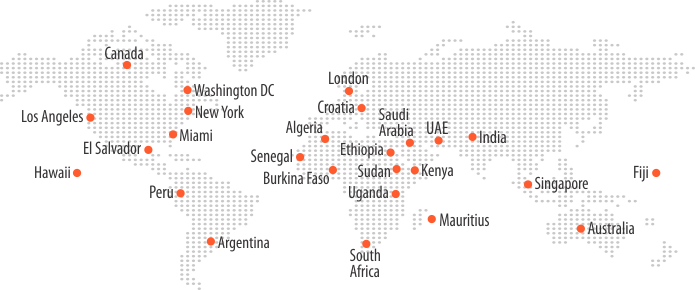Blockchain: A Potential Game-Changer for Telecommunications
Blockchain is synonymous with security, immutability and anonymity. It is an ever-growing openly distributed ledger featuring decentralized nodes or blocks containing a timestamp, transaction data and cryptographic hash to avoid unauthorized access to confidential information. The biggest advantage of blockchain is that it is managed by a peer-to-peer network, which adheres to a protocol to validate new blocks and facilitate inter-nodal communication. Data once recorded in the blocks, cannot be altered unless all the subsequent blocks are altered, which in turn requires a consensus from the network majority.
Blockchain is basically the driving force for cryptocurrencies, but it has the potential to change the course of many industries including Information and Communications Technology (ICT). The Telecom industry can streamline several processes such as billing, number porting, enabling roaming connections and smart transactions as well as ensuring easy management of customer identities among other things.
The Significance of Blockchain in Telecom
There are multiple use cases for blockchain in the telecom sector; some of them are mentioned below.
Roaming Fraud Prevention
Telecom players lose billions of dollars every year due to roaming frauds and the costs associated with it. Roaming frauds happen if a subscriber uses the visited public mobile network (VPNM) to get access to resources of the home public mobile network (HPMN). This results in HPMN losing out on the charges owed by subscribers but is forced to pay for the roaming services to VPNM. The issues with this type of fraud include longer detection time and longer response time. Frauds usually occur when subscribers are not in the HPMN networks, making it difficult to detect frauds early, thus increasing the detection time. The response time increase occurs due to a lack of control over visited networks.
The frequency of frauds can be reduced by implementing blockchain technology between mobile operators under a roaming agreement which can act as a fraud management system in itself. It allows both operators to verify the validity of every transaction via their designated nodes. If a subscriber attempts to connect with the intention of fraud, it is easily identified during the authentication process. Blockchain’s shared ledger enhances the visibility into the activities of roaming subscribers by ensuring immediate access to roaming transactions.
Identity Theft Prevention
Identity theft refers to the use of another person’s identity or false identification to subscribe to or use telecom services. In the telecom sector, an identity thief can steal information to procure a SIM card and use it to get access to a number of services, the brunt of which will have to be borne by the victim. SIM cards have the International Mobile Subscriber Identity (IMSI) stored in them and a key related to it is usually used for identifying and confirming subscribers. A signal containing the IMSI is sent over to the network station as soon as the mobile device is turned on. The identification number basically links the device with the provider’s account.
Blockchain can be used to combat identity theft by telecom players and reduce revenue losses. It can identify devices and link them to their respective subscribers. The next step would be to broadcast a device-generated public key as opposed to the IMSI, thus doing away with the need to share the private key with any of the third parties. Additionally, private information is encrypted in a private key and since it is associated with a single device, it highly reduces the likelihood of data theft.
Driving Automation in Telecom
Blockchain in tandem with smart contracts can be used to automate a number of processes including billing and roaming. Smart contracts (or crypto contracts) are computer programs featuring specific rules, which are meant to control transfer of assets as well as digital currencies between two parties. Along with defining rules and penalties, a smart contract can also automate the process of enforcement of those rules or obligations.
Blockchain and smart contracts can replace manual interworking and do away with the need to go through clearinghouses, thus speeding up the process. Settlements and other transactions between operators can also be done automatically via blockchain, which will not only help companies save time, but also increase transparency and reduce labor costs. For example, when a call is initiated, the details are recorded on Blockchain and based on this information and the rules agreed upon in the smart contract, payment is determined between the two operators.
Streamlining 5G Connectivity
5G, the latest entrant into the telecom domain, can benefit from blockchain. The next generation cellular network promises ubiquitous access across multiple networks, which will require service providers to handle a varied set of access mechanisms. One of the challenges in the implementation of 5G is helping the system select the fastest access node for every user. Blockchain can handle and streamline this task by enabling new access selection mechanisms.
Also read: Impact of 5G on Unified Communications
Process Simplification
Identifying issues in the current telecom scenario is a rather slow process, which in turn slows down dispute resolution. Blockchain offers real time views of issues, thus accelerating identification and resolution of disputes. As the decentralized technology is distributed amongst multiple computers, it does not require complex machines or mediators to run. This helps simplifying processes along with speeding them up.
Conclusion
The telecom industry constantly evolves with time and rightly so, considering its huge customer base and the amount of data it needs to process. The immutable nature of blockchain makes it a great option to consider for preventing frauds and identity thefts, while protecting confidential information and streamlining tedious internal processes such as convergent billing, VoIP fraud detection, dispute management, and prepaid customer management to name a few. The fairly new concept has already found some takers in the telecom sector and is gradually making its way into the mainstream. What remains to be seen is how long it takes for the industry to accept blockchain whole-heartedly and experience the impact it can create.





